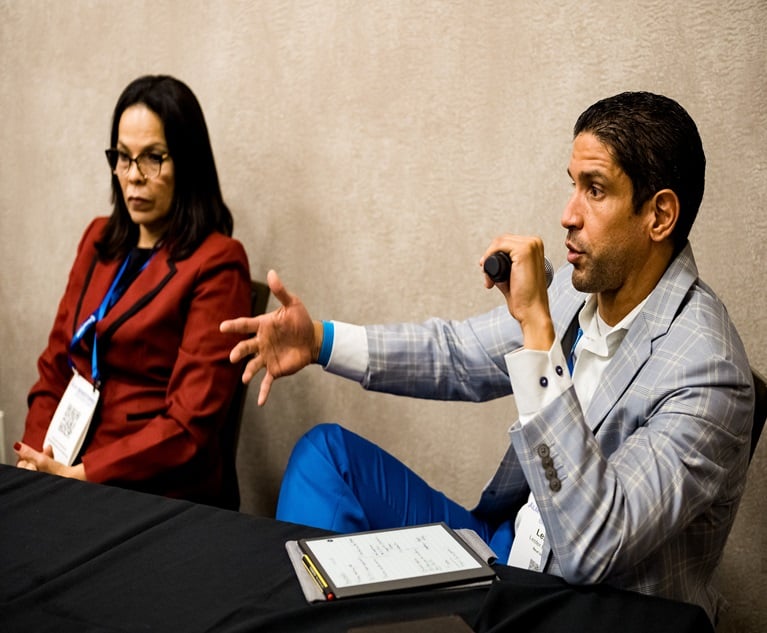Anyone who doubts whether U.S. insurers can do anything toinfluence how consumers feel about the industry hasn’t been payingattention to the efforts of their colleagues north of theborder.
|Mary Lou O’Reilly, senior vice president of issues managementand communications at the InsuranceBureau of Canada (IBC), the national trade association forCanada’s property and casualty insurers, related her group’sproactive reputational risk management approach during the recentannual conference of the Insurance Marketing and CommunicationsAssociation in Toronto.
|I was on hand to deliver a speech about the industry’s outlook,and have her permission to share some of IBC’s success stories withyou.
|Setting the stage, O’Reilly described the 1990s as a “goldenage” for Canadian insurers, with carriers “vocal and visible,”highlighted by a national campaign to combat insurance fraud, and ahigh-profile effort in the recovery from a massive ice storm.
|The following decade, however, was another story altogether, asthe industry’s approval ratings plummeted thanks to what O’Reillycalled a “perfect storm” of negative developments. Escalating claimcosts (particularly in auto insurance) hammered insurer bottomlines, prompting much tighter underwriting, rising prices, andheavy-duty criticism from lawmakers, media, and consumers. In oneprovince, there was even talk of nationalizing auto insurance.
|“The P&C industry had essentially lost its voice,” sherecalled. “Our reputation was in tatters and our credibility wasdown the tubes. We became Public Enemy Number One.”
|Focus groups reiterated the IBC’s worst fears.
|“Mostly what we observed through the glass was anger,” saysO’Reilly. “If the participants didn’t have a bad experience withinsurers on their own, they had heard horror stories from friends,family, or colleagues. Since insurance is a word-of-mouth,pocket-book product, it didn’t take long for that attitude to goviral.”
|However, additional market research commissioned by IBC revealedthat consumer feelings towards insurers could be influenced by morethan just the price of coverage. “They also want insurers to beconcerned and caring,” notes O’Reilly. “They want insurers to payclaims, but they also want to know that the industry is doingsomething to protect them and their communities.”
|Related: Read MoreSam Friedman Blog Posts
|In response, and following intensive focus group testing, theIBC developed a proactive campaign to cast insurance in a morepositive light.
|“You have to appeal to consumers on an emotional level sothey’ll listen to you on an intellectual level,” suggests O’Reilly.“It’s very difficult to educate anyone about the industry if theydon’t want to listen, so you need to get their attention by being apositive force in their everyday lives. You need to reach out tothem on issues they care about, not simply the ones we deemimportant.”
|To coordinate its brand-polishing efforts, the IBC formed theRestoring Consumer Confidence Coalition, to which the Canadianproperty and casualty insurance industry made a long-termcommitment. “We realized there were no quick fixes,” says O’Reilly.“We were in this for the long haul.”
|The coalition targeted three major stakeholders—consumers,government policymakers and the media. “Our goal was to regainenough trust to at least convince people to look at both sideswhenever an insurance-related issue came up,” she notes. “Thatmight sound like a fairy tale, but we believed we could make it areality.”
|In putting together its brand-rebuilding program, the IBC soughtto make sure its initiatives resonated with consumers on a personallevel and was regionally adaptable.
|The IBC’s major focus was on injury prevention, under the banner“Be Smart, Be Safe.” Getting involved in safety and accidentprevention “wherever people are—whether at home, on the road or atplay—shows that insurers care about them,” according toO’Reilly.
|One point in the industry’s favor is that “consumers recognizeour expertise in risk management, so we had a lot of credibilitygoing in,” she says. “In addition, consumers told us that safetywas an issue that mattered to them.”
||Part of IBC’s effort was a multi-media campaign againstdistracted driving, including person-on-the-street interviewsasking about “the craziest things they’d seen people doing behindthe wheel,” she notes. IBC also traveled around the countryexhibiting its “DUMB Car”—which stands for “DistractionsUndermining Motorist Behavior”—a simulator that tests driverreactions to distractions such as cell phones, music-playingdevices, eating and drinking, and even personal grooming.
|The driving simulator, taken to schools and other public forumsaround the country, includes an actual-size driver’s seat, gaspedal and brake, dashboard and plasma monitor. “It was a fun way toteach people how dangerous this kind of behavior can be,” explainsO’Reilly, who said the DUMB Car “resonated with consumers andgenerated tons of media attention.”
|IBC also became an active partner in “Operation Red Nose” duringthe holiday season, donating money and manpower, includinginsurance company executives among the volunteers who droveimpaired partygoers (and their cars) home.
|More recently, IBC unveiled its “Dry House” interactive teachingtool at local fairs and home renovation shows. The device wasdescribed by O’Reilly as “a large touch-screen exhibit staffed byIBC ambassadors that demonstrates how to prevent water damage andbasement flooding.”
|The group also started a “Writing the Wrongs” campaign, in whichIBC staff wrote letters to the editor and op-ed articles to correctmisinformation about the industry.
|IBC’s brand reputation-building efforts had a measurable impact.From 1998 to 2003, the industry’s favorability rating dropped from5.8 (out of a possible high of 10) down to 4.9, IBC’s researchfound. The percentage of those saying they were satisfied withtheir insurers fell from 43 percent in 1998 to just 29 percent in2003.
|Just 18 months after beginning the campaign to restore consumerconfidence, reports O’Reilly, the industry’s favorability ratingwas back up to 5.7, before topping 6.0 shortly thereafter. Consumertrust in the industry increased from a paltry 37 percent to a morerespectable 46 percent.
|Even the tone of media coverage had improved. “When we started,63 percent of media stories about the industry were negative, butthat’s only 27 percent now,” she notes.
|The IBC’s efforts are ongoing, although the program—which has abudget of about $5.8 million a year—has been recast as theMaintaining Consumer Confidence Coalition. However, the biggestchallenge, warns O’Reilly, is “complacency.”
|“Once the industry’s numbers started climbing back up, there arelots of other places to direct this money,” she says. “But you’vegot to keep at it. Be consistent, be responsive and becompassionate.”
|Could a similar program improve the reputation of U.S. insurers?While O’Reilly concedes that the United States is “massive”compared to its Canadian neighbor, “you can usually find a way tomake a difference in your communities,” she says, suggesting thatinsurers consider “decentralizing” their efforts to respond tolocal priorities.
|She also advises the industry to follow the IBC’s lead and“develop tools to make insurance company employees effectiveambassadors to communicate more positive messages about what we doto make people safer and more secure wherever they work, live, orplay.”
|U.S. insurers already have a lot of positive work to promote.Indeed, the Insurance Institute for Business and Home Safety delivered apresentation at the IMCA conference about its efforts to teststructural resistance to wind and fire. Included was a dramaticdemonstration of how simply having a front door open out into thestreet rather than into the home can make the difference between atotal loss and relatively minor damage in a windstorm.
|IBHS generated a lot of media buzz with its latest tests, andover the years the long-established Insurance Institute for Highway Safetyhas cast the industry in a positive light as well.
|So how about the industry sponsoring a TV realty show in whichinsurers and their associations go around the country showing whata difference sound loss control can make? What have they got tolose?
|What do you folks think?
Want to continue reading?
Become a Free PropertyCasualty360 Digital Reader
Your access to unlimited PropertyCasualty360 content isn’t changing.
Once you are an ALM digital member, you’ll receive:
- All PropertyCasualty360.com news coverage, best practices, and in-depth analysis.
- Educational webcasts, resources from industry leaders, and informative newsletters.
- Other award-winning websites including BenefitsPRO.com and ThinkAdvisor.com.
Already have an account? Sign In
© 2024 ALM Global, LLC, All Rights Reserved. Request academic re-use from www.copyright.com. All other uses, submit a request to [email protected]. For more information visit Asset & Logo Licensing.








